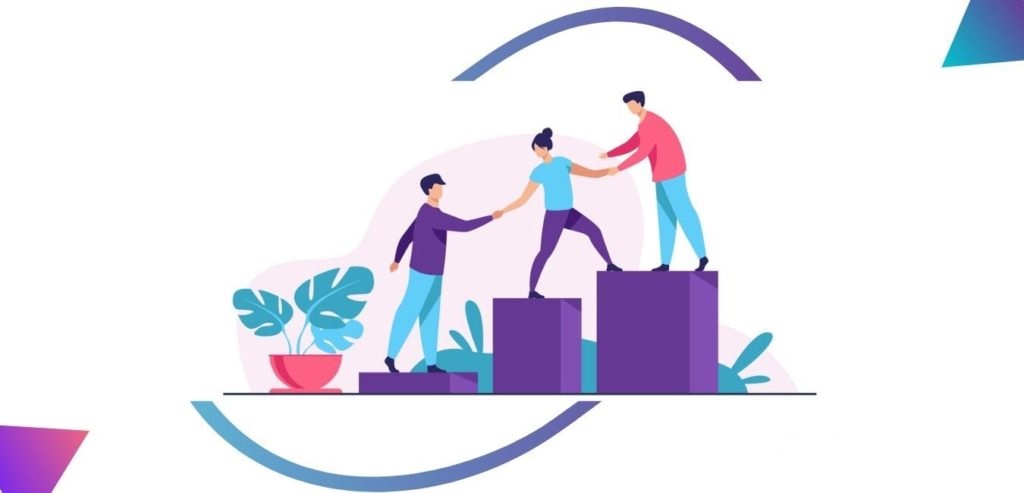I have learnt about speed model in coaching.
Useful one I am sharing with all of you
Teams function well when then they have ownership in decision making
- Leadership decisions taken without involvement of team inputs have less chance of succeeding
- A collective approach of co-created vision, consultative decision and collaborative action through emotionally engaged teams is a sure fire recipe for success.
Collective Vs Individual
The effect of individual involvement in co-creation of decisions works at multiple levels.
- First, each individual working alone creates his or her own mind map,
- collective responsibility does not translate into collective vision
- The organization and its leaders may lay down their own vision to apply to each individual in the organization
- experience shows that people often do not, buy into this vision.
- Second, when properly managed, group synergies can produce better results than individual inputs separately coordinated.
- when facilitated well, groups develop emotional connect between individuals. This can raise the good to great.
Making groups work as teams
individuals working in groups strive better seeking to give out their best and produce remarkable results under the following conditions:
- Working towards a meta objective with thematic and emotional content
- Acting in an uplifted emotionally bonded state
- Developing on their strengths supported by appreciation
- Sharing experiences, stories, legends and metaphors
- Feeling of being in control and in ownership of a co-created solution
Success of the team coach depends on the ability of the coach to generate:
- Emotional bond
- Awareness of issues
- Positive communication
- Accountability
- Balancing right and left brained approach in developing a creative solution
SPEED Collective Coaching Process
This SPEED process comprises 5 stages of:
- Sharing Strengths
- Presenting Future
- Exploring Options
- Establishing Structure
- Developing Action
Sharing Strengths
In this stage, the Coach focuses in building out of a group a team bonded emotionally through a shared vision.
Collective coach invites each member of the group to share with others answers to three questions.
- What is your understanding of organisational objective?
- What role can you play in achieving this objective?
- Share a personal experience where you exhibited and experienced an inherent strength in a powerful manner that makes you suitable for the role you plan to play.
As the sharing continues, one can sense the team emerging from the group.
In several groups, members openly admit to this stage as their first experience of appreciation in the organization.
As collective appreciation proceeds in the first stage of the SPEED process, group members become connected emotionally and form a team.
This team building process needs time. Typically, need to allow a minimum 15 minutes/person for a group of 10, and 30 minutes/ person for a group of 20
Presenting Future
From team building, the coach moves to business as the second step.
A senior member of the organization expands the shared vision into a more detailed storyline, either as a problem for resolution or a vision to aim for.
This person explains the current situational reality and the desired outcome, as a contract in a classic coaching session. The team moves from Present reality to a Vision for the Future.
The coach divides the team into smaller groups of 3 or 4, and each small group develops its version of the desired future vision.
This session followed by a presentation of about 10 minutes by each group and appreciative discussion would take 2 hours.
As each sub group presents its future vision, the coach categorizes the main points under common categories. Generally, 6 to 10 main categories emerge from the Presenting Future session.
The coach then rearranges the groups by shuffling members to form another set of sub groups for the next SPEED session.
Exploring Options
Exploring Options, the third stage, adds value in moving from the creative Presenting Future stage to practical realities of Structure and Action that follow.
The reconstituted sub groups start with the categories arising out of the Presenting Future session, to develop options that would fit their organization culturally and structurally.
In this Exploring Option stage, this idea was discussed at far greater length in terms of viable options of alternative materials, issues of sourcing, product life etc. The coach allows about 2 hours for this stage.
Establishing Structure
Once the sub groups have Explored Options arising out of ideas for the Future, they move to the fourth stage of Establishing Structure, in terms of organization, resources, and budgets necessary to produce the desired results.
Developing Action
In this last and crucial stage, the team takes responsibility and accountability for all that it has created thus far. Without a conclusive output in Developing Action, the entire SPEED process would be a waste of time.
Each of the actionable ideas that came up through these earlier processes should now be time lined with individual responsibilities in a SMART (Specific, Measurable, Actionable, Realistic, Timeline) format.
The first stage of Sharing Strengths can be a Team Building exercise, and in the SPEED process helps co-create and co-own decisions.
- The first three stages of SPEED work with the right brain non- analytically to enable the team break out of the box. The coach should master this facilitation.
- The last two stages, Establishing structure and Developing Action, seem more analytical than the earlier three, and yet, the coach can make this process interactive and co-creative through collective coaching
Application
- Leadership Development through co-visioning to collaborative action
- Ideal for strategy sessions to set Objectives and Key Results (OKR)
- Culture Change
Journey Beyond SPEED
- Team develops an action dashboard for follow up based on output from SPEED session
- Monthly collective coaching sessions address progress
- Some individual coaching needs surface by observing team dynamics and are addressed with permission from organization
In a 12 month journey, feedback and feed-forward sessions with key organizational stakeholders outside the team joining the team once every 3 months
